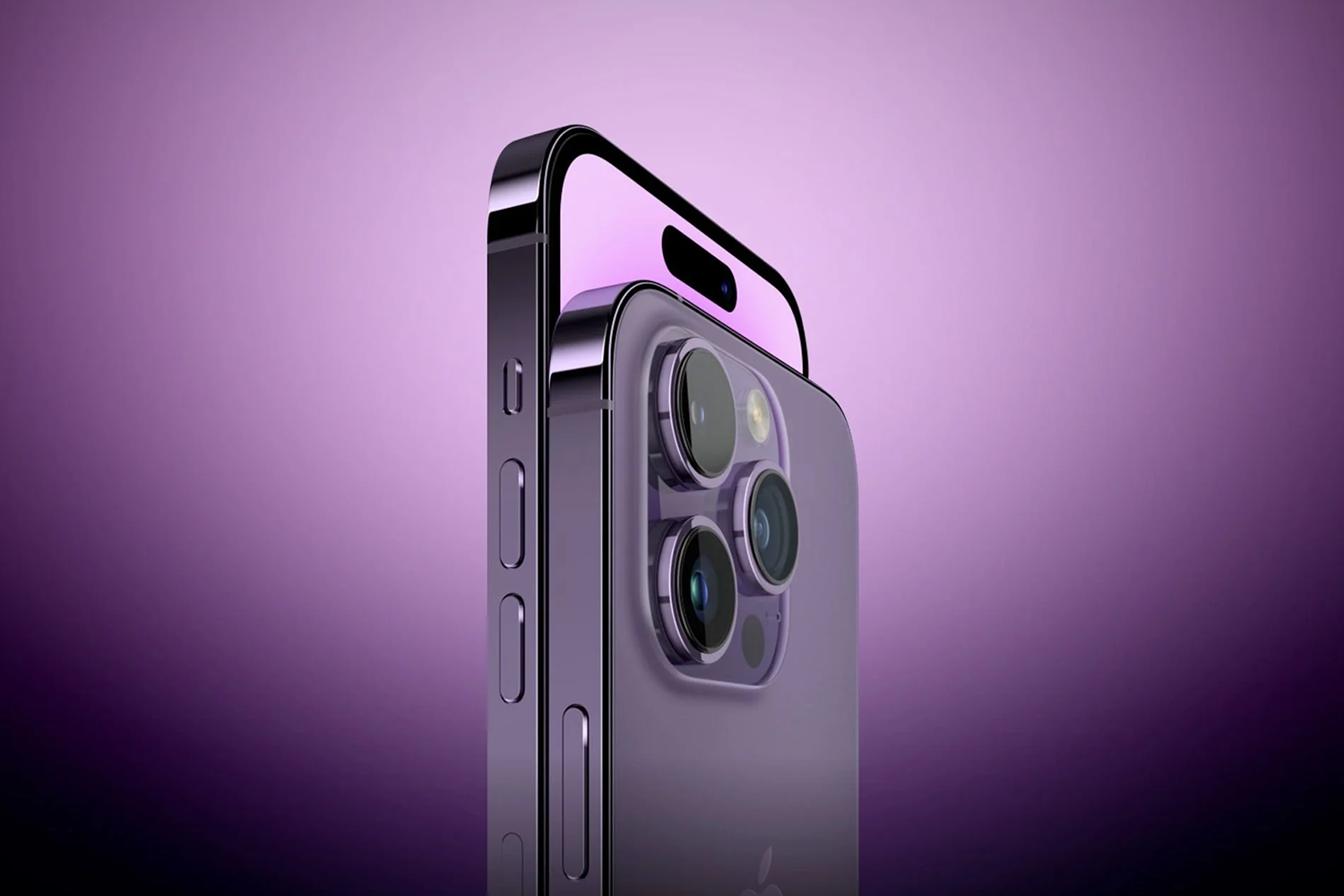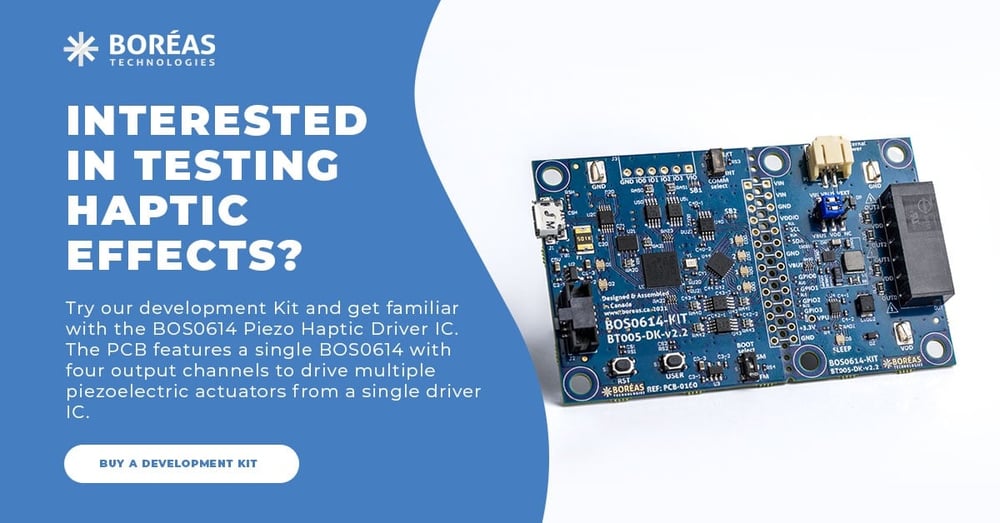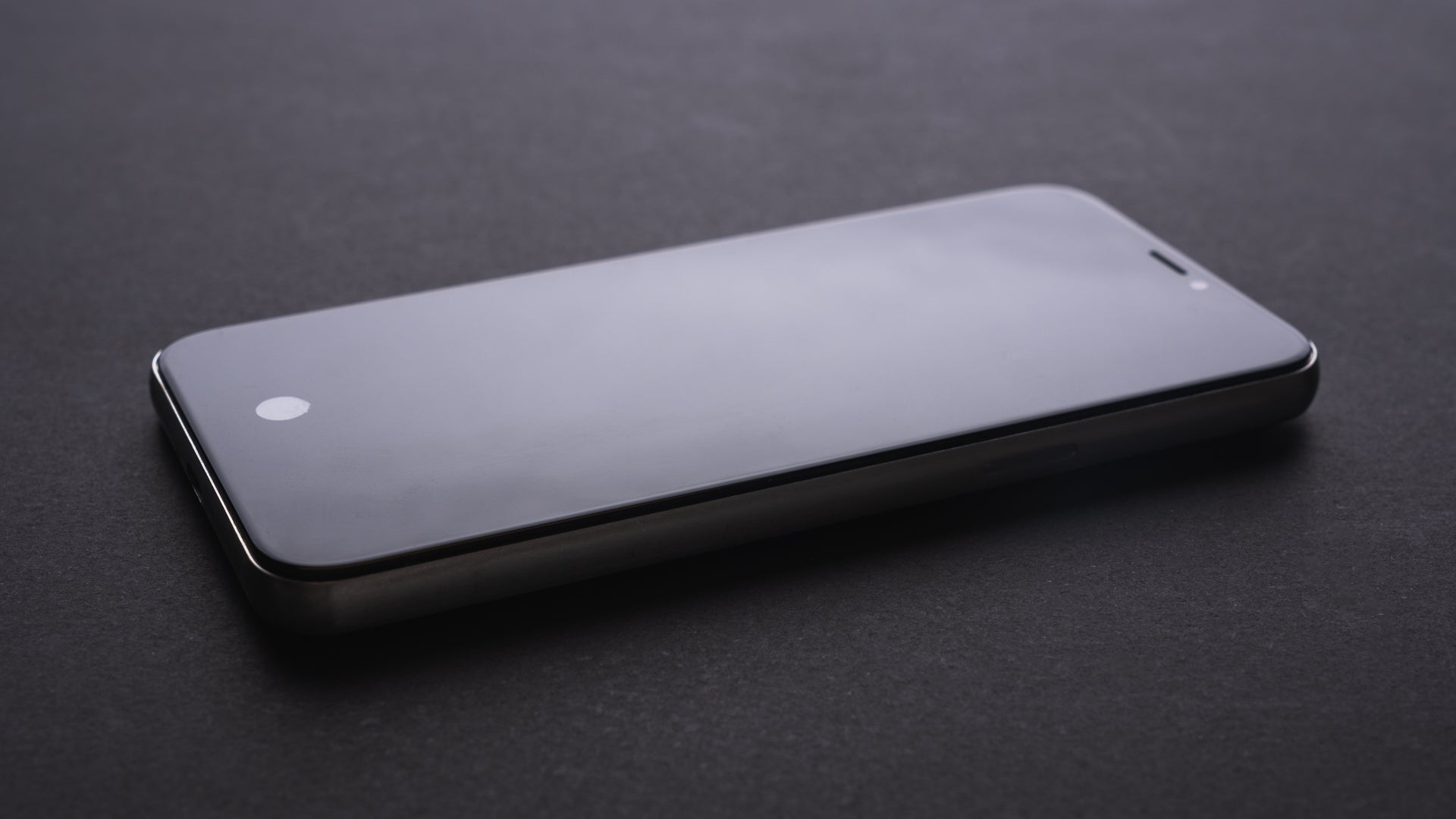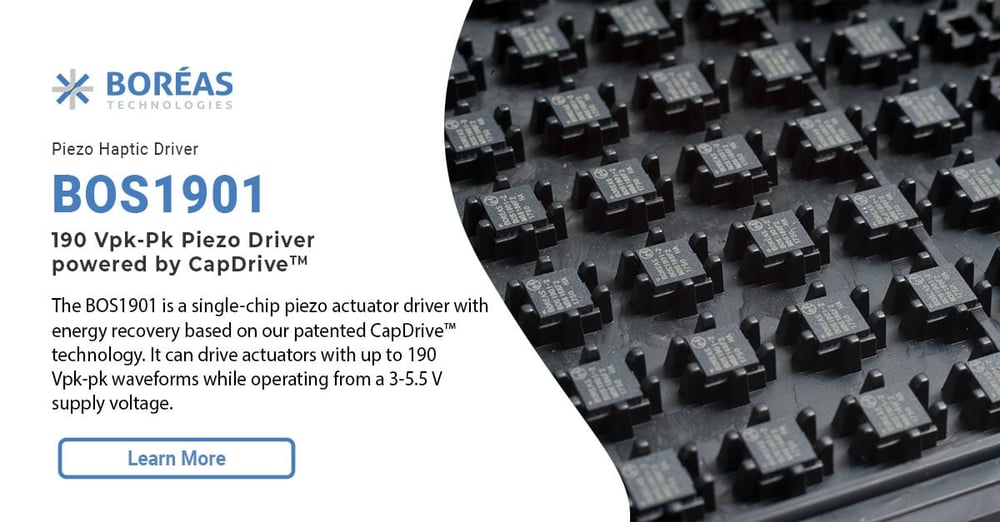
Steady-state technology is nothing new. The term accompanies the birth of the semiconductor industry and the introduction of computer chips. However, interest in the technology has picked up in recent months as rumors have swirled that Apple will replace the side buttons on its iPhone 15 Pro models with haptic technology-enabled solid-state buttons. In this article, we'll examine what solid-state technology is, what advantages it offers to OEMs, and how integrated haptic drivers can take solid-state tech to the next level.
What Is Solid State Technology?

Solid-state technology simply refers to tech that doesn't utilize moving parts. Originally coined to differentiate semiconductor devices from vacuum tubes, modern usage generally emphasizes the lack of moving parts in favor of electronic circuits. For example, solid-state buttons use haptic feedback systems to emulate the sensation of resistance. This makes it feel as though you're pushing down when you click a haptic-enabled solid-state button.
However, during this process, the solid-state panel never moves. Haptic technology can also create the sensation of different textures while manipulating solid-state panels. Common types of solid-state buttons use sensors along with integrated circuits to produce a wide range of physical sensations.
Haptic technology describes technology that creates physical sensations and feedback. A vibrating cell phone and the rumble feature on a video game controller are both examples of haptic tech. Older haptic models produced a limited range of sensations. This often suffered from a timing lag that further limited their efficacy. However, innovations in haptic technology, such as the adoption of newer piezo drivers, allow for more granular physical sensations.
Piezo haptics can transform a solid-state panel by providing an array of tactile feedback. For example, a motionless steady-state panel can take on the function of a button through the sensation produced by a piezo haptic driver.
The Advantages of Solid-State Electronic Devices

Solid-state electronic devices hold several key advantages over devices that use more traditional mechanisms. Generally speaking, they use less electricity, produce less heat, enhance device longevity, and provide quicker and more reliable responses. The next three sections examine each benefit in greater detail.
Greater Versatility
Mechanical buttons can only perform one function. By contrast, solid-state haptic technology opens up wide ranging usage possibilities. With piezo haptic driver technology, UX designers can offer more specific user feedback across a wide range of tasks. Different clicking sensations can help users distinguish between certain actions, such as clicking a virtual button, typing on a digital keyboard, or steering a race-car in a mobile video-game.

Seamless Design
Apple has long pushed for a seamless iPhone design. Eliminating buttons, cracks, and open ports contributes to a sleeker, more aesthetically pleasing design. It also allows for thinner dimensions. Finally, ingress points let dust, dirt, and moisture enter into the device. This can potentially lower the phone’s lifespan.
Increased Durability Without Failure or Wearing of Mechanical Components
Mechanical components wear out. It's an unavoidable feature of the friction that accompanies movable technology. These keys are also prone to jamming or just flat-out breaking. You can sidestep these issues with steady-state technology. Steady-state buttons provide superior durability by eliminating the use of moving material and other individual components.
Applications of Solid-State Systems
You can integrate solid-state devices with a variety of products and systems. The use of solid-state technology in the following systems is nothing new. However, advances in solid-state systems promise the wholesale replacement of moving parts, such as keys, buttons, and switches.

Next-Gen Mobile Phones With Solid-State Buttons
The next generation of mobile phones will benefit from solid-state buttons using haptic feedback. These systems provide vital tactile sensations as users navigate routine features, such as toggling the volume up and down or turning the device on and off. Removing the few remaining mechanical buttons on these devices will open up new possibilities for UX designers. For example, they can alter feedback systems to provide varied sensations for different tasks. One videogame might provide a harsher buzzing, while another may favor a light vibration. Rumors that Apple will be replacing the side volume and on-off buttons with solid-state buttons for its 15 Pro series attest to the benefits of this new tech.
Wearables and Smart Watches
The current generation of smartwatches already relies on various solid-state electronics for basic functionality. However, the continued use of mechanical switches poses problems for general durability and usability. Replacing existing buttons and switches with a solid-state haptic feedback system will allow these devices to survive underwater for longer periods of time. They'll also enhance the user experience by eliminating rough bumps and edges that disrupt the watch's otherwise smooth contours.
Computers and Tablets
Many tablets still integrate various buttons and switches. The replacement of these features with solid-state panels that emulate physical sensations via haptic feedback systems will improve device durability and allow for the creation of sleeker, thinner tablets.
While many laptop computers already depend on steady-state technology for the computer's trackpad, most still rely on mechanical keyboards. While these keyboards provide a pleasing user experience, they're also prone to breakdowns. Plastic keys commonly fall off and become lost or misplaced. Dust, debris, and moisture can enter through the cracks surrounding the individual buttons. This can damage the device. Bulky keys also expand the laptop's width. Replacing mechanical keys with a steady-state keyboard can make for a thinner device with greater longevity.
Building Solid-State Devices With a State-of-the-Art Piezo Driver

You can enhance your solid-state devices with a state-of-the-art piezo driver. Piezo drivers differ from other haptic drivers in a few key ways. While earlier forms of haptic technology, such as ERM and LRA devices, failed to provide convincing haptic feedback, new piezo driver technology effectively mimics a broad range of sensations while providing hyper-localized feedback. Users of piezo driver-enabled solid-state buttons often find themselves incapable of distinguishing between the haptic feedback system and traditional mechanical buttons.
Learn more about how piezo drivers from Boreas Technologies can enhance your smartphone, smartwatch, computer, or tablet's user experience.


Leave a comment